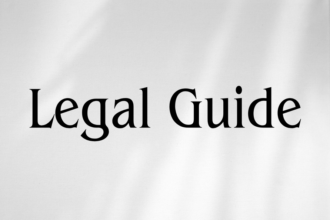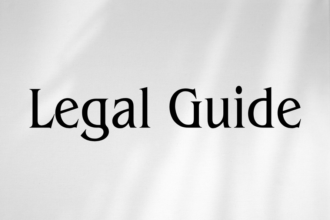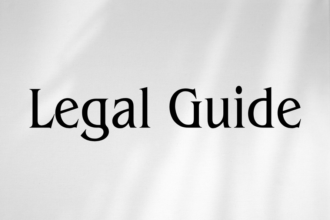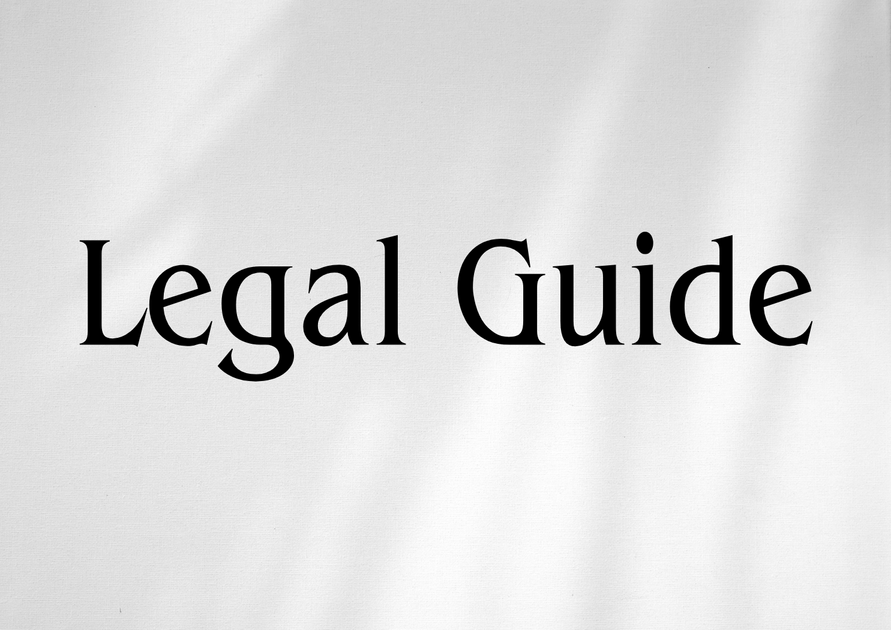Introduction: Navigating Murabaha and Ijara Contracts in Saudi Banking
In recent years, Saudi Arabia’s banking sector has experienced a significant transformation, propelled by sweeping legal reforms and heightened demand for Shariah-compliant finance solutions. Central to Islamic banking—and particularly salient for institutions operating or partnering in the region—are Murabaha and Ijara contracts. These contracts present unique structures and compliance requirements, forming the backbone of Islamic asset financing, property acquisition, and business lending. For clients in the UAE and broader GCC, understanding their legal framework is not only essential for regulatory compliance but also critical for business innovation, cross-border expansion, and risk management, especially with new UAE and Saudi legislation impacting cross-jurisdictional operations.
This article provides a comprehensive, professional analysis tailored to decision-makers, legal practitioners, and business leaders invested in Islamic finance. It outlines the legal requirements, highlights regulatory changes—including key 2025 updates—and offers actionable insights to enhance compliance and strategic decision-making.
Table of Contents
- Legal Overview of Islamic Banking in Saudi Arabia
- Regulatory Framework for Murabaha and Ijara Contracts
- Legal Structure of Murabaha Contracts
- Legal Structure of Ijara Contracts
- Key Comparisons: Old and New Regulatory Regimes
- Compliance Risks and Practical Strategies
- Case Studies and Hypotheticals
- UAE Context and Impact for Cross-Border Transactions
- Conclusion and Forward-Looking Perspectives
Legal Overview of Islamic Banking in Saudi Arabia
Saudi Arabia’s regulatory landscape for Islamic banking is governed by a combination of Shariah principles and statutory requirements. The primary regulator, the Saudi Central Bank (SAMA), imposes oversight through circulars, guidelines, and periodic assessments. Notably, the Banking Control Law (issued by Royal Decree No. M/5, 22/02/1386H) provides the legal foundation for banks’ operations, while Islamic banking products require further compliance with resolutions issued by SAMA and the Saudi Shariah Board.
Key Statutes and Guidance
- Banking Control Law (Royal Decree No. M/5), as amended
- SAMA’s Shariah Governance Framework (2020)
- Shariah Circulars and Regulations on Murabaha and Ijara
- AAOIFI Shariah Standards
- UAE Federal Decree-Law No. (14) of 2018 on the Central Bank and Organization of Financial Institutions and Activities, for cross-border context
The interplay between statutory law, regulatory supervision, and Shariah compliance establishes the distinct landscape within which Saudi banks operate Murabaha and Ijara contracts, with direct implications for cross-border business into the UAE.
Regulatory Framework for Murabaha and Ijara Contracts
Murabaha and Ijara contracts are both classified as Islamic financing models, yet their regulatory frameworks entail unique considerations.
Murabaha Contracts
Murabaha is a ‘cost-plus’ financing arrangement where a bank purchases an asset on behalf of the client, discloses the acquisition cost, then sells it to the client at a pre-agreed markup, with payment usually in installments. SAMA regulates Murabaha through a combination of:
- Product approval processes—ensuring transactions are Shariah-compliant and not mere conventional loans in disguise
- Disclosure and documentation requirements—including transparent cost and profit margin declaration
- Asset tracking and ownership protocols
Ijara Contracts
Ijara, or Islamic leasing, involves the bank acquiring an asset and leasing it to the client for a fixed period, with periodic rent payments. SAMA’s framework for Ijara emphasizes:
- Definite identification of leased assets, ensuring Shariah compliance
- Clear distinction between lessor and lessee responsibilities
- Documentation stipulating transfer of ownership (if applicable, as in Ijara Muntahia Bittamleek)
Shariah Board Oversight
Both contract types must receive Shariah Board approval, with regular audits and compliance reviews mandated by SAMA’s Shariah Governance Framework (2020). This process is echoed in the UAE’s Central Bank regulations, which are particularly relevant for banks and corporates with regional operations.
| Contract Type | SAMA Oversight | Shariah Board Involvement | Key Documentation |
|---|---|---|---|
| Murabaha | Product Approval, Disclosure | Required, with annual review | Asset Purchase, Sale Agreement, Financing Terms |
| Ijara | Lease Terms Audit, Ownership Protocols | Required, including asset transfer if applicable | Lease Agreement, Asset Registration, Rental Schedule |
Legal Structure of Murabaha Contracts
Conceptual Foundation
Under Shariah principles, Murabaha is a non-interest-based alternative to conventional financing. Its legality in Saudi banking is rooted in specific contractual steps, which must be followed sequentially to preserve its Shariah-compliant character.
Legal Ingredients of Murabaha
- Genuine Asset Purchase: The bank must acquire legal title of the asset from a third-party seller prior to onward sale to the client. This includes documentation such as invoices and title proof.
- Disclosure of Cost and Profit: SAMA requires explicit disclosure of the original purchase price and the added bank markup.
- Transfer of Title: Ownership, and in some cases possession, are transferred to the client upon sale.
- Non-Permissibility of Cash Murabaha: SAMA expressly prohibits the practice of ‘tawarruq’ (commodity Murabaha) used to structure what is, in economic substance, a cash loan—unless regulated commodities exchanges are utilized, per the SAMA Circular 381000012146.
Contractual Documentation
Saudi banks are required to document Murabaha transactions with clear, enforceable contracts. These documents must evidence:
- Initial client request
- Bank’s purchase offer
- Sale agreement stipulating price, profit, and payment terms
- Proof of asset delivery/acceptance
Compliance Checklist
| Requirement | Old Regime | 2020 SAMA Updates |
|---|---|---|
| Asset Ownership | Proof sometimes unclear | Documented ownership required |
| Profit Disclosure | Limited regulation | Mandatory upfront disclosure |
| Shariah Board Supervision | Optional | Mandatory, with audit trails |
| Use of Tawarruq | Frequent, less regulated | Restricted, subject to strict controls |
Case Example: Property Acquisition via Murabaha
Consider a UAE holding company acquiring Saudi commercial real estate through Murabaha financing from a Saudi bank. The bank first purchases the property, documents ownership, discloses profit margin, and then sells the property to the UAE client at a marked-up price, paid over five years. Non-compliance with proof of title or unclear cost disclosure could render the transaction void or subject to SAMA penalties.
Legal Structure of Ijara Contracts
Conceptual Foundation
Ijara contracts function as Shariah-compliant leases. Unlike conventional leasing, Ijara requires:
- A defined, tangible asset owned by the lessor (the bank)
- An enforceable lease agreement specifying duration and rent
- The bank to bear asset maintenance risk (unless contractually delegated under strict Shariah terms)
Phases of Ijara Contracts
- Asset Identification: Precise definition and lawful ownership by the bank at contract execution
- Lease Execution: Detailed agreement between bank (lessor) and client (lessee) with clear rental schedule
- End-of-Lease Options: Option for transfer of ownership (Ijara Muntahia Bittamleek), through a gift or a separate sale, not embedded in lease contract
Critical Legal Issues
- Risk and Maintenance: The bank must bear major risks and maintenance obligations, though minor maintenance can be contractually transferred
- Event of Default: Must stipulate consequences in a manner compliant with Shariah; e.g., penalties are restricted
- Asset Use: Clear terms on permissible use and responsibilities of the lessee
Documentation and SAMA Mandates
SAMA’s recent updates require banks to maintain detailed asset registers and lease documentation. Transfers of ownership, if intended, must be executed via stand-alone contracts post-lease. This responds to historical legal ambiguities and aligns KSA practices more closely with UAE Central Bank guidance on Islamic leases.
Practical Insight: Fleet Leasing Example
A multinational logistics firm in Dubai contracts with a Saudi Islamic bank to finance a fleet of trucks through Ijara. The bank acquires and leases the trucks, bearing major maintenance expenses. Proper documentation and oversight ensure both compliance and operational efficiency. If the bank fails to prove asset ownership, or imposes excessive penalties for early lease termination, it risks legal action or regulatory censure.
Key Comparisons: Old and New Regulatory Regimes
Saudi legal reforms, particularly SAMA’s 2020 Shariah Governance Framework, have significantly altered Murabaha and Ijara practices. The following table compares key aspects under the old and new regimes, highlighting growing convergence with UAE standards.
| Factor | Pre-2020 (Saudi) | Post-2020 (Saudi) | Current UAE Practice |
|---|---|---|---|
| Shariah Board Supervision | Voluntary, limited | Mandatory, with periodic reviews | Mandatory by Central Bank |
| Asset Ownership Proof | Unverified or implicit | Documented, audited | Documented, with penalties for lapses |
| Profit/Rent Disclosure | Often generic | Specific, transparent | Mandatory, with standardized forms |
| Commoditized Tawarruq | Pervasive in practice | Heavily restricted | Permitted only under licensed facilities |
| Default & Termination | Limited clarity | Require detailed protocols | Regulated by Central Bank rules |
Compliance Risks and Practical Strategies
Common Risks
- Asset Ownership Gaps: Failure to document title or transfer can render contracts void
- Profit/Markup Misstatement: Non-disclosure or ambiguities may trigger SAMA audits or litigation
- Shariah Audit Failures: Lack of independent Shariah board sign-off exposes banks to severe regulatory fines
- Cross-Border Legal Gaps: When UAE parties engage with Saudi banks, discrepancies in governing law clauses or documentation standards create enforceability risks
Recommended Compliance Strategies
- Implement robust internal Shariah audit mechanisms, mirroring SAMA and UAE Central Bank best practices
- Adopt clear and detailed transaction documentation, maintaining records of asset transfer and cost/profit calculations
- Mandate annual Shariah Board reviews and regulatory compliance training for legal and operational teams
- For UAE entities, insist on enforceable cross-border clauses, clear dispute resolution provisions, and compatibility with UAE Federal Decree-Law No. (14) of 2018
Suggested Visual: Murabaha and Ijara Compliance Checklist
We recommend placing a visual checklist summarizing key compliance obligations for banks handling Murabaha and Ijara contracts, improving internal training and audit readiness.
Case Studies and Hypotheticals
Case Study 1: SME Financing via Murabaha
An Abu Dhabi-based SME seeks working capital by engaging a Saudi bank for Murabaha trade finance. The bank ensures compliance by first acquiring the raw materials required by the SME, transferring legal title, and providing clear markup disclosure. SAMA’s 2020 rules require the Shariah board to review and sign off on the full transaction chain. The SME’s audit reveals minor gaps in cost disclosure. SAMA imposes corrective measures, but no fine as the breach is promptly addressed.
Case Study 2: Ijara in Real Estate Development
A UAE developer structures a Saudi housing project supported by Ijara financing. The Saudi bank purchases the land, leases it to the developer, and ultimately offers a transfer of title under a separate agreement. Non-compliance in maintenance obligations due to vague contract language leads to a dispute over liability for structural repairs. The matter is resolved via SAMA mediation, highlighting the importance of precise risk allocation and documentation.
UAE Context and Impact for Cross-Border Transactions
Relevance to UAE Businesses and Executives
With UAE banks increasingly partnering with their Saudi counterparts—whether for syndicated financing, real estate, or asset leasing—the requirement for harmonized compliance frameworks has never been higher. The UAE’s Federal Decree-Law No. (14) of 2018 and the ensuing Central Bank regulations are particularly influential, mandating robust anti-money laundering controls and Shariah-compliance requirements that mirror many recent SAMA reforms.
Recent Legal Updates and 2025 Outlook
Both the UAE and Saudi Arabia are expected to continue tightening their oversight of Islamic financing, with new regulations anticipated in 2025 regarding digital Shariah audits for Murabaha and Ijara, and expanded cross-border reporting. UAE businesses must stay abreast of these changes to ensure enforceability of contracts, especially when pledging Saudi-based assets or participating in joint ventures.
Practical Guidance for UAE Clients
- Conduct legal due diligence on all counterparties, including verifying SAMA and UAE Central Bank licenses
- Negotiate contract terms that ensure enforceability in both Saudi and UAE courts; include arbitration and dispute resolution clauses referencing recognized centers (e.g., DIFC, Saudi Center for Commercial Arbitration)
- Undertake periodic compliance reviews to prepare for SAMA and UAE Central Bank audits
Suggested Visual: Cross-Border Compliance Flowchart
A visual flowchart mapping critical compliance steps for UAE businesses entering Murabaha or Ijara contracts with Saudi banks can provide navigational clarity.
Conclusion and Forward-Looking Perspectives
The legal architecture underpinning Murabaha and Ijara contracts in Saudi banks is undergoing rapid evolution, influenced by regulatory tightening in both Saudi Arabia and the UAE. For legal advisors, executives, and business leaders, understanding these structures is paramount—not only for ensuring compliance, but for unlocking new forms of strategic financing amid growing regional integration. With further reforms and digitalization expected by 2025, continuous legal education, meticulous documentation, and proactive compliance will distinguish successful organizations.
Our recommendation: Invest in compliance infrastructure, engage legal expertise on both sides of the border, and adopt a forward-thinking approach to Shariah-compliant finance. This positions your business to capitalize on evolving opportunities while mitigating regulatory risk.
Best Practices Checklist
- Maintain up-to-date Murabaha and Ijara contract templates, updated for 2025 UAE and Saudi legal requirements
- Ensure regular Shariah board and legal compliance reviews
- Adopt technology solutions for audit trail and reporting compliance
- Build relationships with both SAMA and UAE Central Bank to stay ahead of legal changes
For more tailored guidance, please consult a UAE legal adviser specializing in cross-border Islamic banking compliance.




